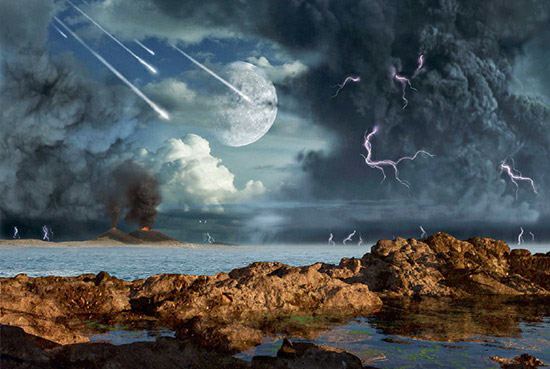The Archean, the second-oldest eon in Earth’s geologic history, began around 4 billion years ago, roughly 500 million years after Earth’s formation. This eon is significant for containing some of the oldest datable rocks on Earth’s surface. The early Archean landscape was vastly different from today’s Earth, with a hot, mildly acidic ocean covering most of the planet, occasionally interrupted by small protocontinents.
During this time, the atmosphere likely had little free oxygen and was rich in greenhouse gases like water vapor and CO2, contributing to a warmer surface. The planet also experienced heightened volcanic activity due to internal radioactive heating and residual heat from Earth’s accretion. Life during the early Archean was scarce or possibly non-existent.
Over the 1,500 million years of the Archean, Earth underwent dramatic changes. The rates of impact cratering and volcanic eruptions decreased substantially. The advent of plate tectonics led to the growth of continental landmasses from the foundations of older protocontinents. Erosion from these new continents increased ocean salinity and reduced acidity. The atmosphere cooled and became more oxidizing, setting the stage for the modern ocean-land hydrologic cycle involving evaporation, condensation, and precipitation. By the late Archean, around 2.5 billion years ago, life was flourishing on Earth.
A pivotal development in the Archean was the emergence of cyanobacteria, single-celled microorganisms capable of photosynthesis. This process, which produces oxygen, marked a significant evolutionary leap, contributing to the accumulation of free oxygen in the atmosphere. This oxygen later became a crucial energy source for more complex life forms, shaping the future course of life on Earth.

